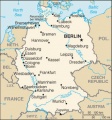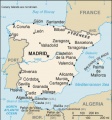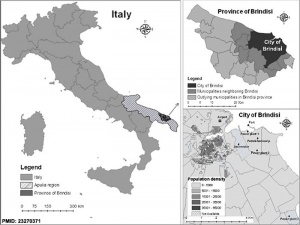Europe Statistics
| Embryology - 27 Apr 2024 |
|---|
| Google Translate - select your language from the list shown below (this will open a new external page) |
|
العربية | català | 中文 | 中國傳統的 | français | Deutsche | עִברִית | हिंदी | bahasa Indonesia | italiano | 日本語 | 한국어 | မြန်မာ | Pilipino | Polskie | português | ਪੰਜਾਬੀ ਦੇ | Română | русский | Español | Swahili | Svensk | ไทย | Türkçe | اردو | ייִדיש | Tiếng Việt These external translations are automated and may not be accurate. (More? About Translations) |
Introduction
See also Germany, Spain and United Kingdom that currently also have separate statistical information pages on this site.
| Statistics Links: Introduction | Reports | World Population | World Fertility | World Infant Mortality | Maternal Mortality | Australia | Brazil | Canada | China | Germany | India | Indonesia | Europe | Myanmar | Netherlands | Spain | United Kingdom | Romania | Uganda | United States | BGD Tutorial - Applied Embryology and Teratology | National Perinatal Statistics Unit | AIHW | Category:Statistics | |
|
Some Recent Findings
|
Congenital Statistical Data
The following data is from a 2010 EUROCAT paper.[2]
- total prevalence of major congenital anomalies of 23.9 per 1,000 births for 2003-2007.
- 80% were livebirths.
- 2.5% of livebirths with congenital anomaly died in the first week of life.
- 2.0% were stillbirths or fetal deaths from 20 weeks gestation.
- 17.6% of all cases were terminations of pregnancy following prenatal diagnosis (TOPFA).
- prevalence of chromosomal anomalies was 3.6 per 1,000 births.
- contributing 28% of stillbirths/fetal deaths from 20 weeks gestation with congenital anomaly
- 48% of all TOPFA.
- Congenital heart defects (CHD) were the most common non-chromosomal subgroup (6.5 per 1,000 births).
- Limb defects (3.8 per 1,000)
- Renal anomalies (3.1 per 1,000)
- Neural defects (2.3 per 1,000).
2004 - perinatal mortality associated with congenital anomaly was 0.93 per 1,000 births, and TOPFA 4.4 per 1,000 births, with considerable country variation.
| Malformation (non-chromosomal) | Total Cases | Cases Prenatally Diagnosed | % of Total Cases |
|---|---|---|---|
| All Anomalies | 75751 | 22573 | 30 |
| Anencephalus and similar | 1232 | 1185 | 96 |
| Spina Bifida | 1577 | 1288 | 82 |
| Hydrocephalus | 1914 | 1403 | 73 |
| Transposition of great vessels | 1188 | 454 | 38 |
| Hypoplastic left heart | 888 | 624 | 70 |
| Cleft lip with or without palate | 2857 | 1379 | 48 |
| Diaphragmatic hernia | 893 | 509 | 57 |
| Gastroschisis | 993 | 904 | 91 |
| Omphalocele | 730 | 596 | 82 |
| Bilateral renal agenesis including Potter syndrome | 392 | 343 | 88 |
| Posterior urethral valve and/or prune belly | 291 | 234 | 80 |
| Limb reduction | 1626 | 811 | 50 |
| Club foot - talipes equinovarus | 3678 | 1398 | 38 |
| Malformation (non-chromosomal) | Total Cases | Cases Prenatally Diagnosed | % of Total Cases |
|---|---|---|---|
| Chromosomal | 12479 | 8765 | 70 |
| Down Syndrome | 7233 | 4538 | 63 |
| Patau syndrome/trisomy 13 | 685 | 625 | 91 |
| Edwards syndrome/trisomy 18 | 1709 | 1537 | 90 |
Data: EUROCAT Website Database http://www.eurocat-network.eu/PRENATALSCREENINGAndDIAGNOSIS/PrenatalDetectionRates data uploaded 04/12/2012
Denmark
Danish National Birth Cohort
The Danish National Birth Cohort (DNBC) is a large population study related to DOHAD theory, of the exposure during development influence fetal growth, cell divisions, and organ functioning, may have long-lasting impact on health and disease susceptibility.[3] More than 900 PubMed publications refer to the study data.
The Danish National Birth Cohort - its background, structure and aim[3]
- "It is well known that the time from conception to early childhood has importance for health conditions that reach into later stages of life. Recent research supports this view, and diseases such as cardiovascular morbidity, cancer, mental illnesses, asthma, and allergy may all have component causes that act early in life. Exposures in this period, which influence fetal growth, cell divisions, and organ functioning, may have long-lasting impact on health and disease susceptibility.
- "To investigate these issues the Danish National Birth Cohort (Better health for mother and child) was established. A large cohort of pregnant women with long-term follow-up of the offspring was the obvious choice because many of the exposures of interest cannot be reconstructed with sufficient validity back in time. The study needs to be large, and it is aimed to recruit 100,000 women early in pregnancy, and to continue follow-up for decades. The Nordic countries are better suited for this kind of research than most other countries because of their population-based registers on diseases, demography and social conditions, linkable at the individual level by means of the unique ID-number given to all citizens. Exposure information is mainly collected by computer-assisted telephone interviews with the women twice during pregnancy and when their children are six and 18 months old. Participants are also asked to fill in a self-administered food frequency questionnaire in mid-pregnancy. Furthermore, a biological bank has been set up with blood taken from the mother twice during pregnancy and blood from the umbilical cord taken shortly after birth. Data collection started in 1996 and the project covered all regions in Denmark in 1999. By August 2000. a total of 60,000 pregnant women had been recruited to the study. It is expected that a large number of gene-environmental hypotheses need to be based on case-control analyses within a cohort like this."
- Links: DNBC
Germany
Population: 81,471,834 (July 2011 est.) country comparison to the world: 16
Infant mortality rate
- total: 3.54 deaths/1,000 live births
- country comparison to the world: 208
- male: 3.84 deaths/1,000 live births
- female: 3.21 deaths/1,000 live births (2011 est.)
- Links:Germany
Italy
Congenital anomalies among live births in a polluted area[4]"Congenital anomalies and their primary prevention are a crucial public health issue. This work aimed to estimate the prevalence of congenital anomalies in Brindisi, a city in southeastern Italy at high risk of environmental crisis. This research concerned newborns up to 28 days of age, born between 2001 and 2010 to mothers resident in Brindisi and discharged with a diagnosis of congenital anomaly. ...Our findings indicated an increased prevalence of Congenital Anomalies (especially congenital heart diseases) in the city of Brindisi. More research is needed in order to analyze the role of factors potentially involved in the causation of congenital anomalies."
United Kingdom
Population: 62,698,362 (July 2011 est.) country comparison to the world: 22
Infant mortality rate
- total: 4.62 deaths/1,000 live births country comparison to the world: 189
- male: 5.07 deaths/1,000 live births
- female: 4.15 deaths/1,000 live births (2011 est.)
- Links: United Kingdom
References
- ↑ Khoshnood B, Greenlees R, Loane M & Dolk H. (2011). Paper 2: EUROCAT public health indicators for congenital anomalies in Europe. Birth Defects Res. Part A Clin. Mol. Teratol. , 91 Suppl 1, S16-22. PMID: 21381186 DOI.
- ↑ 2.0 2.1 Dolk H, Loane M & Garne E. (2010). The prevalence of congenital anomalies in Europe. Adv. Exp. Med. Biol. , 686, 349-64. PMID: 20824455 DOI.
- ↑ 3.0 3.1 Olsen J, Melbye M, Olsen SF, Sørensen TI, Aaby P, Andersen AM, Taxbøl D, Hansen KD, Juhl M, Schow TB, Sørensen HT, Andresen J, Mortensen EL, Olesen AW & Søndergaard C. (2001). The Danish National Birth Cohort--its background, structure and aim. Scand J Public Health , 29, 300-7. PMID: 11775787
- ↑ Gianicolo EA, Bruni A, Rosati E, Sabina S, Guarino R, Padolecchia G, Leo C, Vigotti MA, Andreassi MG & Latini G. (2012). Congenital anomalies among live births in a polluted area. A ten-year retrospective study. BMC Pregnancy Childbirth , 12, 165. PMID: 23270371 DOI.
External Links
External Links Notice - The dynamic nature of the internet may mean that some of these listed links may no longer function. If the link no longer works search the web with the link text or name. Links to any external commercial sites are provided for information purposes only and should never be considered an endorsement. UNSW Embryology is provided as an educational resource with no clinical information or commercial affiliation.
- EUROCAT (European Surveillance of Congenital Anomalies) funding from the European Union, in the framework of the Public Health Programme, a WHO Collaborating Centre for the Surveillance of Congenital Anomalies and based at the University of Ulster. EUROCAT | Prenatal Detection Rates
- European Neonatal Network EuroNeoNet
- European Union http://europa.eu
- Council of Europe http://hub.coe.int Pharmaceutical and Healthcare Europe
Glossary Links
- Glossary: A | B | C | D | E | F | G | H | I | J | K | L | M | N | O | P | Q | R | S | T | U | V | W | X | Y | Z | Numbers | Symbols | Term Link
Cite this page: Hill, M.A. (2024, April 27) Embryology Europe Statistics. Retrieved from https://embryology.med.unsw.edu.au/embryology/index.php/Europe_Statistics
- © Dr Mark Hill 2024, UNSW Embryology ISBN: 978 0 7334 2609 4 - UNSW CRICOS Provider Code No. 00098G




